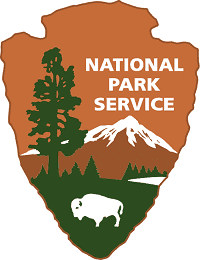Federal Agencies Offer Vision to Ensure Future Generations Can Enjoy Wilderness
OutdoorHub 10.21.14

The federal land management agencies that make up the National Wilderness Preservation System signed an agreement that will guide interagency collaboration and vision to ensure the continued preservation of nearly 110 million acres of the most primitive of public lands.
The 2020 Vision: Interagency stewardship priorities for America’s National Wilderness Preservation System will guide the National Park Service, U.S. Fish and Wildlife Service, Bureau of Land Management and U.S. Geological Survey, all under the U.S. Department of Interior; and the U.S. Forest Service, an agency of the U.S. Department of Agriculture.
The document outlines interagency work and partnerships with non-government organizations for the management of wilderness. The plan emphasizes three broad themes:
- Protect wilderness resources
- Connect people to their wilderness heritage
- Foster excellence in wilderness leadership and coordination.
It also commemorates the 50th anniversary of the Wilderness Act of 1964, which was passed by Congress and led to creation of the National Wilderness Preservation System.
The 758 wilderness areas in 44 states and Puerto Rico showcase some of America’s most pristine landscapes—forested mountains, alpine meadows, rock peaks above timberline, tundra, lava beds, deserts, swamps, coastal lands, and islands. These areas provide a wide array of benefits, including cultural and historic connection to lands once inhabited by Native Americans; clean water and air; habitat for animals; healthy landscapes for rare and endangered species; and recreation activities that are in concert with wilderness values.
“The character of wilderness is unique because of its combination of biophysical, experiential, and symbolic ideals that distinguish it from other protected places,” said National Park Service Director Jonathan B. Jarvis. “Wilderness can be a life-changing experience, and it is part of our mission to preserve wilderness for future generations. Our challenge is to offer this experience to an ever-diversifying public while remaining true to our stewardship mission.”
In 1964, about 9 million acres of Forest Service primitive and wild areas in 13 states immediately received permanent wilderness protection. Subsequent bills added more lands as wilderness. Today nearly five percent of the United States is designated wilderness with more than half of that land in Alaska.
“We stand on the shoulders of conservation giants like Arthur Carhart, Aldo Leopold, Bob Marshall and Howard Zahniser who played significant roles in establishing what we now know as wilderness,” said U.S. Forest Service Chief Tom Tidwell. “Today, we renew our commitment to interagency leadership so that our managers, partners, and volunteers have the tools, skills, and science they need to address a host of challenges as we work to ensure an enduring legacy.”
By working together, the agencies and non-government partners have built a model of effectiveness and efficiency that will continue as they meet the goals of wilderness stewardship in the 21st century.
“America’s National Wilderness Preservation System protects large expanses of habitat that are home to hundreds of native species. At a time when the world faces resource challenges of staggering scale and complexity, we need to ensure that those protections endure,” said U.S. Fish and Wildlife Service Director Dan Ashe. “The 2020 Vision will help federal land management agencies protect and expand the benefits of our wilderness areas for people and wildlife at a landscape scale.”
During the next five years, the agencies will focus on four priorities:
- Completing wilderness character inventories across the National Wilderness Preservation System using standardized interagency protocols and institutionalizing ongoing monitoring.
- Fostering relevancy of wilderness to contemporary society by inspiring and nurturing life-long connections between people of diverse cultures and wilderness.
- Strengthening commitment to and support of the interagency Arthur Carhart National Wilderness Training Center and the Aldo Leopold Wilderness Research Institute to foster excellence in interagency leadership and coordination.
- Conducting climate vulnerability and adaptation assessments across the National Wilderness Preservation System to improved ecological resiliency across broad landscapes.
These interagency priorities will guide stewardship activities, projects, and events for all agency wilderness programs, the interagency Aldo Leopold Wilderness Research Institute, and the Arthur Carhart National Wilderness Training Center. The 2020 Vision updates a previous version and incorporates interagency research and management priorities.
“Our responsibility for administering wilderness came late, compared to other Federal agencies,” said Bureau of Land Management Director Neil Kornze, “but BLM lands are now, and will remain, absolutely central to the nation’s conservation vision.” Kornze pointed out that nearly two-thirds of the wilderness that has been designated since 2000 has been on BLM-managed lands and that the BLM has more than 500 wilderness study areas under its management.
“Many of us have experienced the majesty of being out on Western landscapes that have remained largely unchanged for thousands of years,” Kornze said. “With that same sense of wonder, the BLM looks forward to continuing its protection of wilderness in cooperation with all who care about the effective stewardship of these lands.”
To learn more visit www.wilderness.net.
Contact
Kathy Kupper, Kathy_Kupper@nps.gov, 202-208-6843
Erin Drake, Erin_Drake@nps.gov, 303-969-2091

